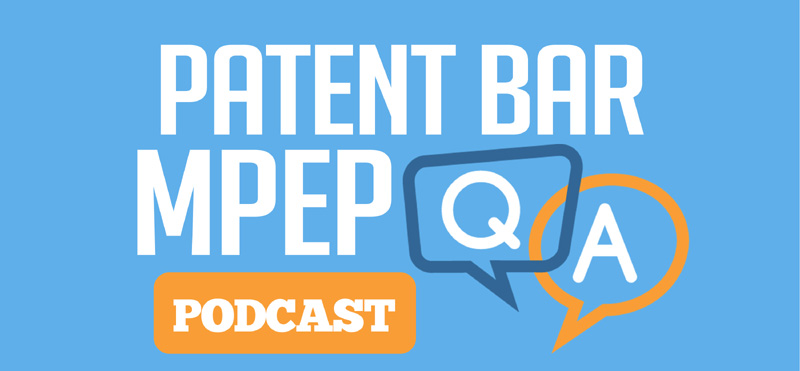
Podcast: Play in new window | Download
Subscribe: Apple Podcasts | RSS
Question:
What type of arguments should a patent owner preliminary response include?
Answer:
A patent owner preliminary response may include one or more of the following arguments:
- The petitioner is statutorily barred from pursuing a review;
- The references asserted to establish that the claims are unpatentable are not in fact printed publications;
- The prior art lacks a material limitation in a challenged claim;
- The prior art does not teach or suggest a combination that the petitioner is advocating;
- The petitioner’s claim interpretation for the challenged claims is unreasonable;
- If a PGR or CBM petition raises 35 U.S.C. 101 grounds, a brief explanation as to how the challenged claims are directed to a patent-eligible invention; or
- Reasons why the Director should exercise his or her discretion and deny institution under 35 U.S.C. 314 and/or 325(d).
Chapter Details:
This question comes from the following supplement “Patent Trial and Appeal Board Consolidated Trial Practice Guide November 2019”. This is a special supplement that at the time of this recording is currently being tested on the Patent Bar exam. Depending on future changes to the supplement and the MPEP, the question and answer may not be applicable.
Section Summary:
This question comes from the following supplement: “Patent Trial and Appeal Board Consolidated Trial Practice Guide November 2019”. The following is a brief summary of the appropriate section in the supplement.
C. Patent Owner Preliminary Response
In IPR, PGR, and CBM proceedings, a patent owner can file a preliminary response within three months of receiving the petition notice. This response can present arguments and supporting evidence, including testimonial evidence, to argue against the institution of a review.
Potential arguments could include statutory bars against the petitioner, issues with the petitioner’s references or claim interpretations, or reasons why the Director should exercise discretion to deny institution.
The weight of testimonial evidence is decided case-by-case, and while no negative inference will be drawn if a patent owner decides not to present testimonial evidence, the patent owner must advise the Board if they choose not to rely on submitted testimony during trial.
